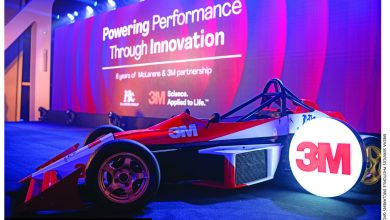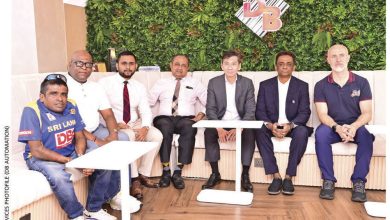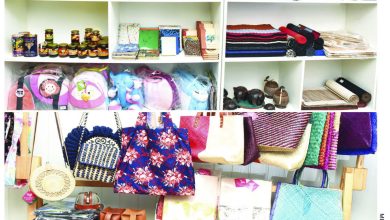MICRO CARS
 Q: How would you assess the current state of Sri Lanka’s motor industry? Do we have the right balance of vehicle types – petrol, diesel and electric?
Q: How would you assess the current state of Sri Lanka’s motor industry? Do we have the right balance of vehicle types – petrol, diesel and electric?
A: The country’s motor industry has been slow to embrace modern technological innovations, primarily due to a lack of supporting infrastructure. This is particularly evident in the electric vehicle (EV) segment where adoption remains limited.
A main challenge is the lack of EV charging points outside the Western Province. As a result, many owners use electric vehicles as secondary cars for short distance, city based driving. While petrol and diesel vehicles continue to dominate the roads, there was a noticeable shift toward hybrid vehicles in recent years, driven mainly by the desire to reduce fuel costs.
However, there’s now a growing preference for taxi services especially among the younger generation who often find it more practical than owning a car. On the public transport front, initiatives such as the park and ride system – where commuters could leave their vehicles at designated points outside the city, such as Moratuwa, and switch to public transport – have not succeeded.
Similarly, the circular bus service intended to connect key suburbs within Colombo city limits also failed to gain traction. The common factor behind both setbacks was the lack of reliable scheduling. Passengers were unable to plan their journeys around fixed bus times, making these services inconvenient for daily commuters.
To address this, Sri Lanka should consider implementing digital signboards on buses and at railway stations (similar to systems in countries such as Singapore) paired with strict adherence to published schedules. This would help build public confidence in the reliability of public transport and encourage a shift away from private vehicles.
I have also proposed several plans to modernise Sri Lanka’s railway system over the years. Unfortunately, these proposals have been hindered by bureaucratic delays and have yet to be implemented.
Q: How do you view Sri Lanka’s tax structure for imported vehicles?
A: Sri Lanka’s taxation rates for imported vehicles are the second highest in Asia, second only to Singapore. This heavy taxation also extends to spare part imports used for vehicle assembly within the country.
Such a hostile tax regime, introduced by certain previous administrations, has significantly discouraged entrepreneurial initiatives in the vehicular sector. It dampened the enthusiasm of local manufacturers such as the late entrepreneur Upali Wijewardene and myself.
Had the government supported local assembly efforts at the time, global companies such as Toyota, Mazda, Hyundai and Fiat would have invested in Sri Lanka’s motor industry – being ready with plans to manufacture and reexport vehicles. Unfortunately, those opportunities were eventually seized by India.
While high taxes are often justified as a means of generating state revenue and curbing vehicle imports, this is not a sustainable long-term strategy. The government must explore alternative revenue streams – particularly by strengthening exports, boosting foreign exchange through tourism and remittances, and developing other key economic sectors.
Q: How durable are locally assembled vehicles and what is your assessment of the Made in Sri Lanka vehicle spare parts market?
A: Today, there are several local vehicle assembly plants in operation, and the end products manufactured and deployed on Sri Lankan roads are of a high quality.
I don’t believe that vehicle imports will negatively impact local manufacturing as we do not see high-end models such as BMW, Rolls-Royce, Mercedes-Benz or electric vehicles being assembled in the country.
When it comes to vehicular component manufacturing, we are witnessing very high standards, particularly for exports. Some of the sensors produced under the Made in Sri Lanka label are even used by globally renowned automobile companies. Local tyre manufacturers also maintain high standards and we use their products ourselves.
In addition, we see quality local production of batteries, seats and various rubber based components. This segment continues to grow with more components being added to the product range regularly. Several of these components are also exported, contributing substantially to the country’s foreign exchange earnings.
Q: What are your organisation’s plans for the future in terms of expansion and new products or services?
A: We at Micro Holdings continuously study the needs of the local market and manufacture vehicles that align with such demands. This approach led to the development and launch of Sri Lanka’s first patented Micro Car 30 years ago, which was followed by a range of other locally assembled vehicles.
To meet the growing demand in the hybrid and high-end segments, we hope to import vehicles to address this gap. Additionally, we are preparing to import 100 percent electric vehicles to cater to the emerging EV market in Sri Lanka.
With tourism on the rise and the industry requiring quality buses, we entered this segment and successfully sold our first imported batch. The second consignment is expected soon.
In the long term, Micro Holdings plans to introduce hybrid petrol vehicles that can travel considerable distances without the need for frequent charging, providing a practical and efficient solution for local consumers.
– Compiled by Shirajiv Sirimane
COMPANY DETAILS
Telephone: 0776 626262 | Email: sales@microholdings.lk | Website: www.microcars.lk







